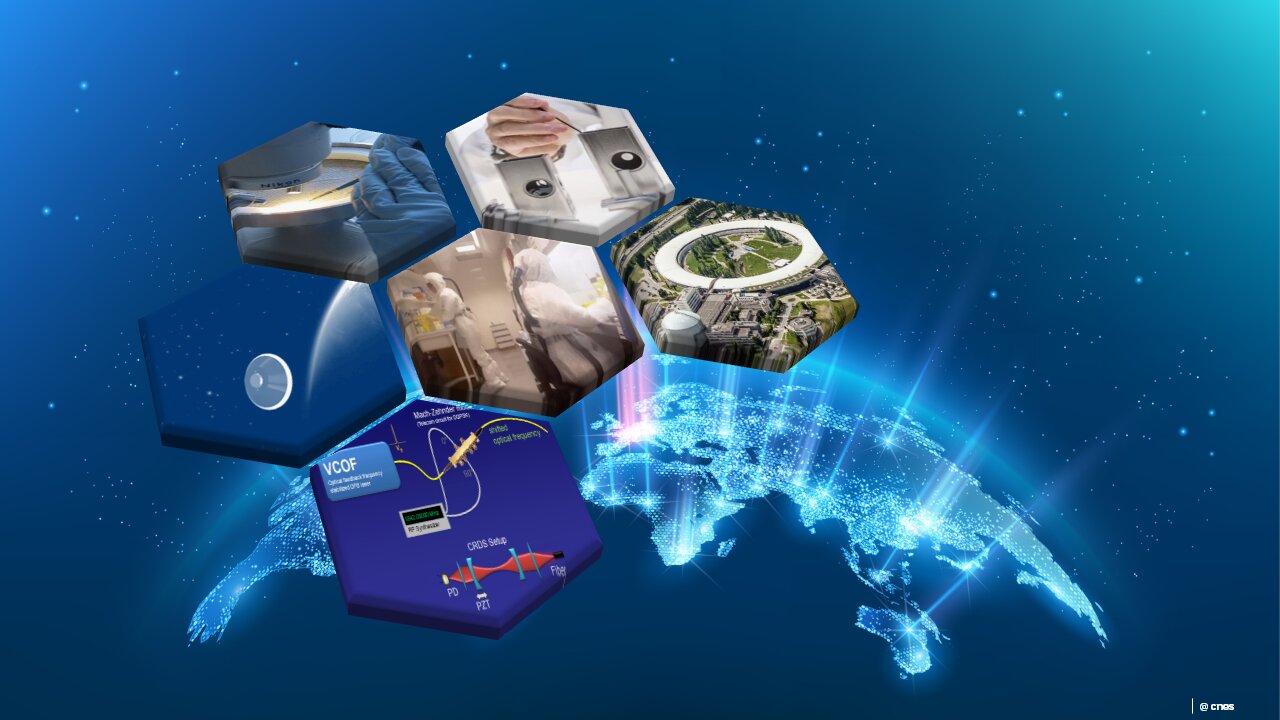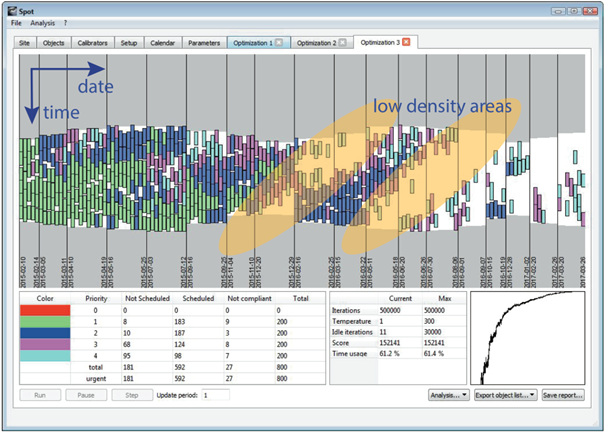
AI data analysis
Artificial intelligence analysis of astrophysical observations
OVERVIEW
The project will develop new algorithms for the optimal exploitation of astronomical observations, enabling the detection and characterization of exoplanets with unrivalled sensitivity.
Loïc DENIS, Jordan FRECON-DELOIRE, Rémi EMONET, Laboratoire Hubert Curien (UMR CNRS-UJM-IOGS), Université Jean Monnet Saint-Etienne
Olivier FLASSEUR, Ferréol SOULEZ, Maud LANGLOIS, Éric THIEBAUT, Centre de Recherche Astrophysique de Lyon (UMR CNRS-UCBL-ENS Lyon), CNRS
Anne-Marie LAGRANGE, Laboratoire d’Études Spatiales et d’Instrumentation en Astrophysique (UMR CNRS-Obs. Paris PSL-Sorbonne Univ.-Univ. Paris Cité), CNRS
Olivier MICHEL, Florent CHATELAIN, Laboratoire Grenoble Images Parole Signal Automatique (UMR CNRS-Grenoble INP-Univ. Grenoble-Alpes), CNRS
Nelly PUSTELNIK, Julian TACHELLA, Laboratoire de Physique (UMR CNRS-ENS Lyon), CNRS
Hervé LE COROLLER, Laboratoire d’Astrophysique de Marseille (UMR CNRS-Aix Marseille Univ-CNES), CNRS
François ORIEUX, Laboratoire des Signaux et Systèmes (UMR CNRS-CentraleSupélec-Univ Paris Saclay), CNRS
Laurent MUGNIER, Olivier HERSCOVICI-SCHILLER, Cyril PETIT, Département Optique et Techniques Associées, ONERA
David MOUILLET, Xavier BONFILS, Faustine CANTALLOUBE, Mickael BONNEFOY, Julien MILLI, Alexis CARLOTTI, Xavier DELFOSSE, Jean-Philippe BERGER, Institut de Planétologie et d’Astrophysique de Grenoble (UMR CNRS-Univ Grenoble Alpes), Université Grenoble Alpes
Jean-François GIOVANNELLI, Laboratoire Intégration du Matériel au Système (UMR CNRS-Univ Bordeaux, Bordeaux INP), Université de Bordeaux
Hervé CARFANTAN, Institut de Recherche en Astrophysique et Planétologie (UMR CNRS-Univ Toulouse III-CNES), Université Paul Sabatier Toulouse III
André FERRARI, Simon PRUNET, Laboratoire J-L Lagrange (UMR CNRS Obs Côte d’Azur, Univ Côte d’Azur), Observatoire de la Côte d’Azur
Jean PONCE, Julien MAIRAL, Équipes WILLOW (Inria Rocquencourt, ENS Paris, CNRS) et THOTH (Inria Grenoble), Inria
Artificial intelligence coupled with advanced signal processing techniques will jointly analyze multivariate measurements (spatial, spectral, temporal), including physics, instrumental models and knowledge from archives of past observations. Particular emphasis will be placed on the automatic estimation of instrumental parameters and algorithms, to improve the robustness of processing, and on the characterization of uncertainties, sensitivity limits and false alarm probabilities, which are essential information for the astrophysical exploitation of results.
To develop
Our researchs
Develop methods for detecting and characterizing exoplanets and their environments
Design new self-supervised algorithms for source detection and image reconstruction. These algorithms must counter the effects of instrumental blur, fluctuations (notably due to adaptive optics corrections) and measurement noise. Exploit self-supervised learning techniques (i.e., with no information other than observations and an instrumental model) and algorithms unrolled in deep-network AI architectures. Model and learn about statistical fluctuations in measurements and their correlation structures (spatial, spectral, temporal).
Advanced signal processing for high-resolution spectroscopy
Detect exoplanets by coupling high-contrast imaging observations with high-resolution spectroscopy. Develop new methods for detecting and characterizing exoplanets using spectro-velocimetry.
Combine multi-date observations and exploit observation archives
Detect exoplanets by combining sets of multi-date observations and estimation of orbital parameters. Deep learning based on the coupling between instrumental models and large archives of observations. Learning instrumental fluctuations from scientific observations.
Multi-instrument and multi-modality fusion
Fusion of high-contrast imaging and optical interferometry observations.
Le Consortium
Université Jean Monnet Saint-Etienne, CNRS, ONERA, Université Grenoble Alpes, Université de Bordeaux, Université Paul Sabatier Toulouse III, Observatoire de la Côte d’Azur, INRIA
Saint-Etienne (Lab. Hubert Curien), Lyon (CRAL, Lab. de Physique), Paris (LESIA, Inria, L2S, ONERA), Grenoble (IPAG, GIPSA-lab, Inria), Marseille (LAM), Bordeaux (IMS), Toulouse (IRAP), Nice (Lagrange).
Scientific expectations
The project will provide the astronomical community with methods to better process data from their instruments dedicated to the search for exoplanets, their characterization and the analysis of their interactions with their environment (proto-planetary disk, other exoplanets). The source code of the algorithms developed in the project will be freely distributed. The expertise acquired in data processing will help guide the design of future generations of instruments.
Societal impacts
The problems of detection, estimation and characterization using artificial intelligence methods integrating instrumental models can find numerous outlets beyond astronomy, in particular in Earth observation (satellite imagery for environmental studies), biomedical imagery (localization of markers in fluorescence microscopy, image reconstruction in the medical field, multi-modality fusion).
Skills development
A multi-disciplinary community of 31 researchers and teacher-researchers specializing in astronomy, instrumentation, signal and image processing, and artificial intelligence, as well as 2 post-docs and 7 PhD students (including one co-funded by ONERA and one co-funded by the University of Bordeaux).


